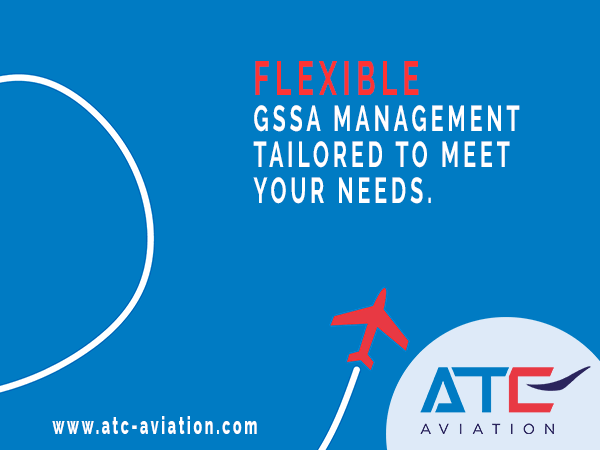
 |
 |
 #INTHEAIREVERYWHERE |
 |
| Vol. 24 No. 36 | Friday August 22, 2025 |
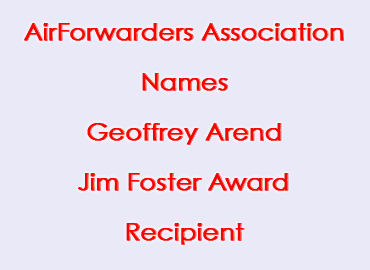 |
So what do you do in air cargo with your shining fleet of freighters when the rest of the airline is occupied elsewhere? |
LONDON CALLINGBefore we get to Istanbul, let me start with an important and completely fresh piece of news, as disclosed by FIATA recently: “At its 134th session in July 2025, the IMO Council agreed to upgrade FIATA’s status from provisional to full consultative, pending final approval at the IMO Assembly in November. This distinction recognises FIATA’s sustained contribution to maritime policymaking and reinforces the influence of the freight forwarding sector in shaping international regulations. As the only representative of the freight forwarding and logistics industry at the IMO, this upgrade means that FIATA can directly shape regulations that reflect the realities of multimodal logistics and promote solutions that are workable, sustainable, and safe.”ISTANBUL IN MY HEART You have no idea what your international trade folder would look like tomorrow? Well, take a deep breath and try to smell the scent of cardamom that comes from the East: go to Istanbul, a city that works as treatment! Cardamom is not the only interesting spice you can find there . . . ECONOMY AND LOGISTICS IN ISTANBUL July is the time of the events we are talking about, here or there matters not, and in July the freight forwarding and logistics industry responded enthusiastically to the powerful call coming from Istanbul, where 10th Ekonomi ve Lojistik Zirvesi (Economy and Logistics Summit) took place. That was an opportunity for FIATA to reap another recognition for its conspicuous role in the industry worldwide, whilst clearly stating a number of priorities in a period when making choices seems to become a fairly complicated affair.
THE VOICE OF THE PRESIDENTFIATA’s President Turgut Erkeskin released the following statement for the Flying Typers: “Trade corridors are not just infrastructure – they are systems. And systems only function when all the actors are connected, aligned, and empowered. FIATA’s digital strategy is designed precisely to enable this connectivity and alignment across the logistics ecosystem. By building on international standards such as those developed by UN/CEFACT, FIATA ensures that freight forwarders and supply chain actors around the world can exchange trusted, structured data seamlessly and securely.” TRADE, THE AMYGDALA AND THE CORRIDORS Ivan Petrov, Immediate Past President of FIATA, gave a presentation at the event in Istanbul, highlighting the main point surrounding FIATA policy and the context of international trade in this period, with the pivotal FIATA multimodal concept taking front stage. The concept of multimodal corridors working as a system, as expressed by Turgut, was crystal clear also in Ivan’s words: “FIATA is looking to work with multimodal corridor management systems and welcomes creative ideas on corridor development. FIATA wished to vocalize and commit to the good functioning of corridors by working together in international collaborations and advancing best practices.” TRULY MULTIMODAL The extensive use of FIATA instruments, such as the FIATA Negotiable Multimodal Bill of Lading (FBL), the only truly multimodal negotiable transport document, now in its digital format, the eFBL, is building trust and security through digitalization, allowing freight forwarders to provide their customers with up to date negotiable trading instruments that can put them in a position to arbitrate among different markets, even when the goods are still en-route. Petrov also underlined the environmental advantages of the eFBL, calling it a “twin transition, going green and digital”. EAST TO WEST OR WEST TO EAST WITH EASE Such challengers highlighted the necessity to continue planning and developing new corridors, hence “FIATA encourages and promotes options in any new multimodal corridors”. For example, the Trans-Caspian International Transport Route(TITR) starts from Southeast Asia and China, runs through Kazakhstan, the Caspian Sea, Azerbaijan, Georgia and reaches the European countries. It links China and Kazakhstan by rail through Dostykor Khorgos/Altynkol, crosses Kazakhstan by rail to the port of Aktau, crosses the Caspian Sea to Baku/Alyat, and Azerbaijan and Georgia by rail to then either continue by rail to South East Europe through Turkiyeor, crossing the Black Sea. This example was surely well received by the Turkish organisers and, despite a number of difficulties that were expertly detailed by Ivan Petrov, seems to be a viable alternative in a period when alternatives may come handy. A LUCKY OCCURRENCE
|
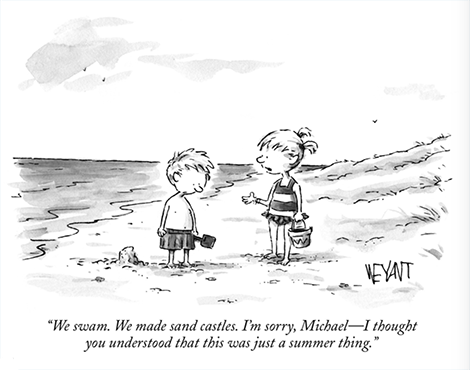 |
 On August 13, a virtual event organized by The American Association of Airport Executives (AAAE) was sponsored by Greater Orlando Aviation Authority: Orlando International (MCO) and Executive (ORL) Airports. On August 13, a virtual event organized by The American Association of Airport Executives (AAAE) was sponsored by Greater Orlando Aviation Authority: Orlando International (MCO) and Executive (ORL) Airports.Here is coverage from The 7th Global Aviation Forum: Modernizing Air Cargo Operations For E-Commerce. This event has created the industry buzz so far in August, underscoring that whatever the season is, the quest to better air cargo is in high gear even during the so-called “Dog Days” of Summer. Here Amar More joins Brandon and Tod Willman of MCO and Patrick Haley, CFM, C.M., ACE, LEED Green Associate of Seattle Air Cargo Facilities and some others in discussions that carry thoughts farther. This on the subject with words from Amar More, Co-Founder & CEO of Kale Logistics Solutions. When the question was asked: What can U.S. airports learn from global cargo hubs, Amar noted: “Most vibrant cargo hubs globally have not just good physical infrastructure, but also have matching digital infrastructure in the form of cargo community systems. “The journey to this transformation will require leadership and neutrality and that should come from the Airports. “In today’s world the only barrier for change is “mindset” and we need to be open to change to leapfrog the rest of the world. About Cargo Community Systems:The man who cofounded a company that has changed that landscape forever with like-minded gateways such as Hartsfield-Jackson Atlanta International Airport advised:“Those who help solve three key age-old challenges of our industry: slow movement of goods, excessive paperwork and visibility, benefit by greatly increasing efficiency. “Helping move more cargo through the same space in a warehouse, by reducing paperwork and carbon emissions, attract more cargo and jobs to the airport and also realize better security. “These efficiencies help create lasting long term winners. “Here in the United States although we are a little behind the rest of the world we have a great opportunity to advance the technology. “Having a cargo community system doesn’t mean stakeholders give up what they have; it just means that they interface their technology with an airport level platform or utilize the modules they don’t have. “Collaboration Technologies and AI will shape the future of the industry,” is the vision and mantra of airport community systems creator Amar More of Kale Logistics.
At the same 7th Global Aviation Forum: Modernizing Air Cargo Operations for the E-Commerce Era, we are fortunate to share some impressions moving forward with the great leader and futurist Brandon Fried of The Airforwarders Association. As usual, Brandon pushed all the buttons advancing the lot of freight forwarders whilst lifting the air cargo form itself. Here are some BF comments . . . “At the Airforwarders Association, we’re seeing forwarders integrate digital platforms for instant quoting, booking, and real-time tracking. “We’re also leveraging data analytics for better forecasting and using automation in warehouses and documentation — but always to enhance, not replace, customer relationships." On Air Cargo Challenges:“Smaller operators face high upfront tech costs, tough system integrations, and ongoing training demands. Cybersecurity is a growing concern, and we can’t lose sight of the personal service our customers value.”“When discussing collaboration, he emphasized: “Bring forwarders in early so solutions fit real-world operations. Test together in live pilots, and focus on shared standards and visibility platforms. When we align on speed, accuracy, and cost savings, everyone wins.” On Customer Service:“Real-time visibility is now a customer expectation. Digital documents and e-AWBs cut delays, and proactive alerts build trust — customers want to know before they have to ask. Technology gives us the data, but forwarders still provide the problem-solving.”Finally, Brandon, after taking a deep breath, addressed regulatory gaps: “Differing screening standards, inconsistent data requirements, and a lack of global digital harmonization slow us down. The Airforwarders Association continues to push for global standards, public-private partnerships, and investments in modern ground infrastructure. Even the best technology can’t overcome outdated warehouses and truck appointment systems.” |
 |
Had a note from Martin Bütikofer, Director of Verkehrshaus der Schweiz (Swiss Museum of Transport) in Lucerne and lovely picture noting some air cargo action on the half shell at an absolute fave when it comes to Museums. |
If
You Missed Any Of The Previous 3 Issues Of FlyingTypers Access complete issue by clicking on issue icon or Access specific articles by clicking on article title |
||
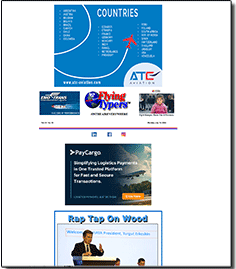 Vol. 24 No. 33 FIATA RAP Tap On Wood Chuckles for July 14, 2025 Delta Cargo & ATC Aviation India iPhone Peak Help Texas Flooding Victims |
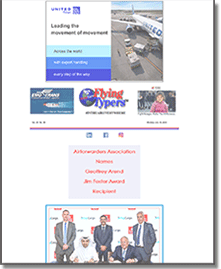 Vol. 24 No. 34 PayCargo's Big Deal In Dubai Rock & Roll Satisfies Cargo Soul Chuckles for July 28, 2025 India Perishables Sector Expansion Ready Set Show Taking The Plunge With LifeGuard |
|
Publisher-Geoffrey Arend • Managing
Editor-Flossie Arend • Editor Emeritus-Richard Malkin |
Send comments and news to geoffrey@aircargonews.co
|